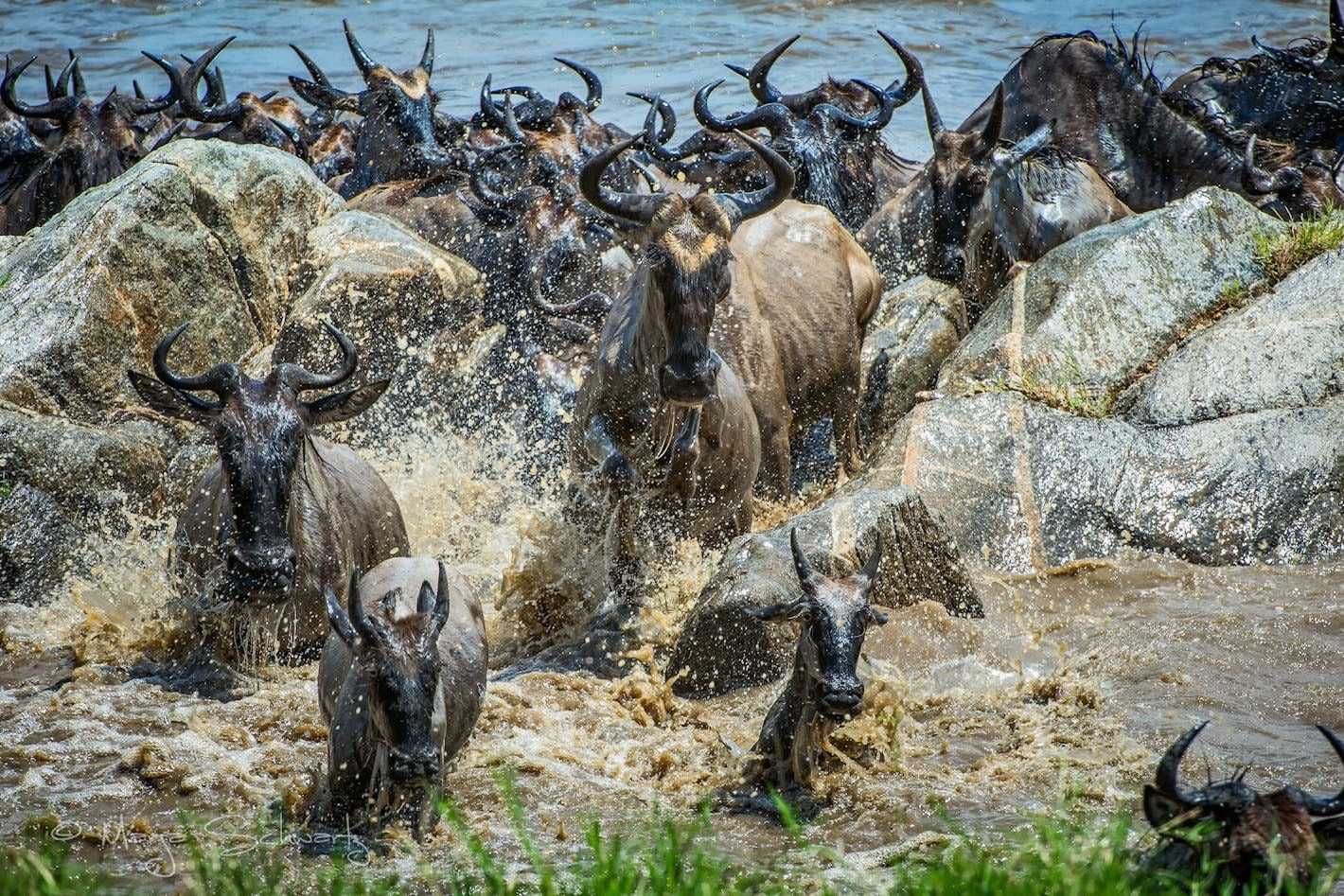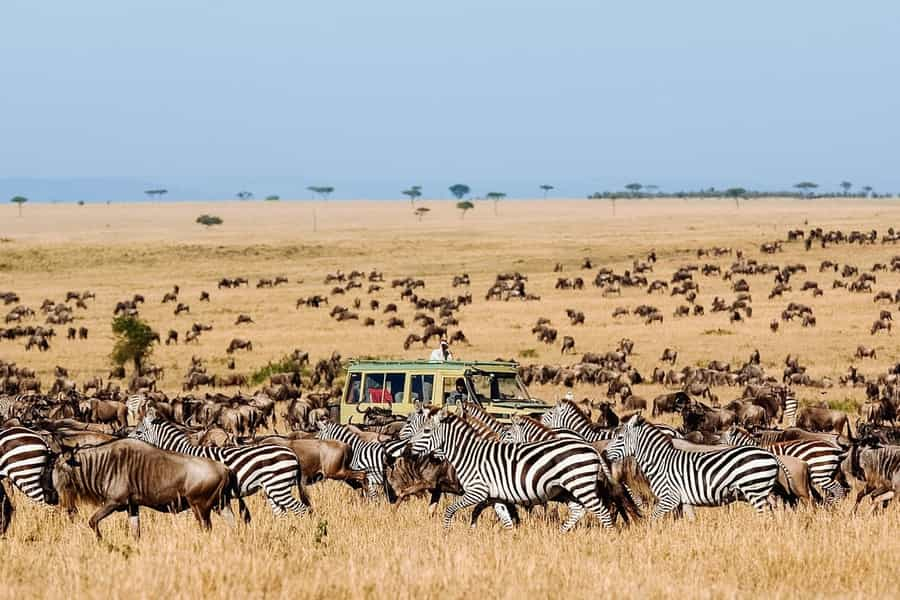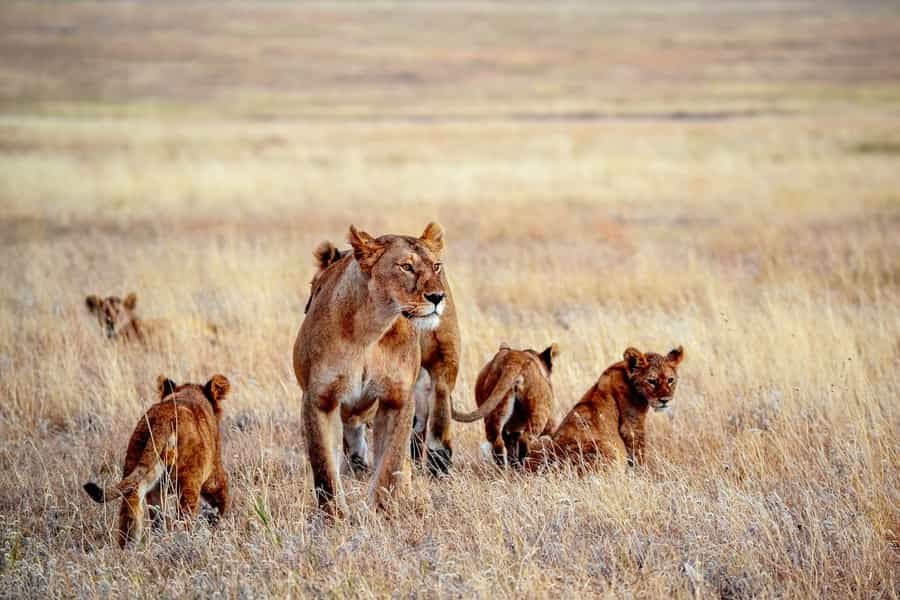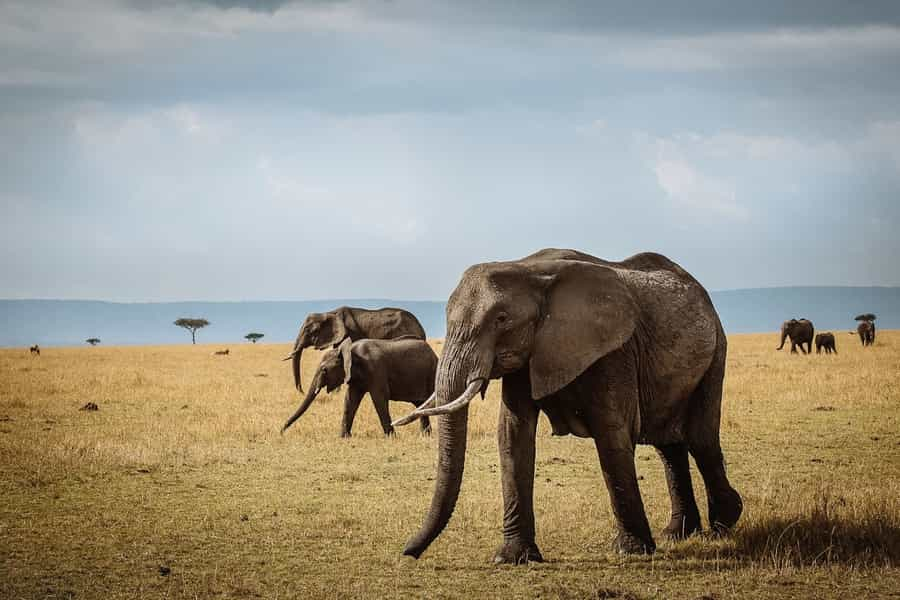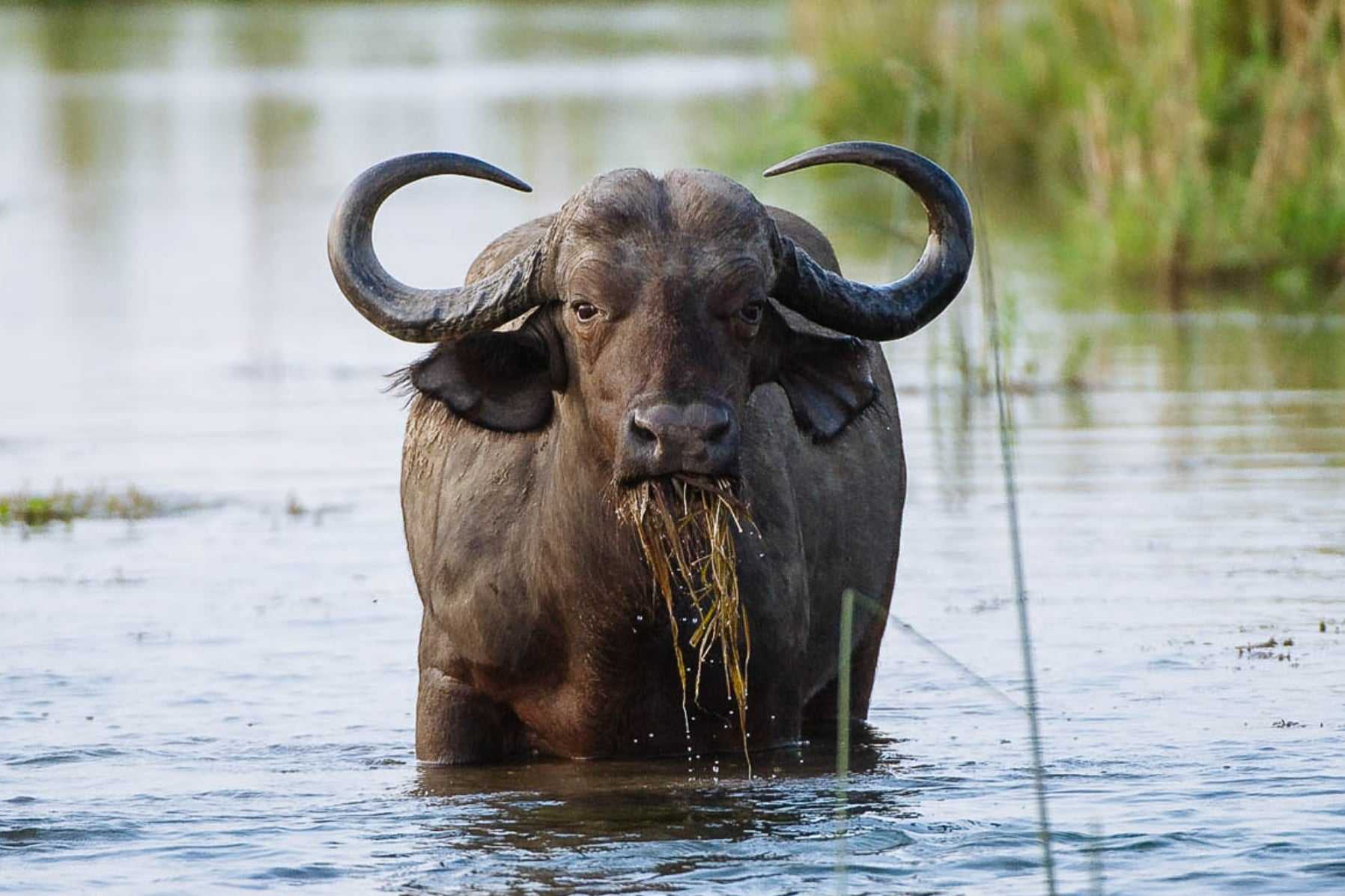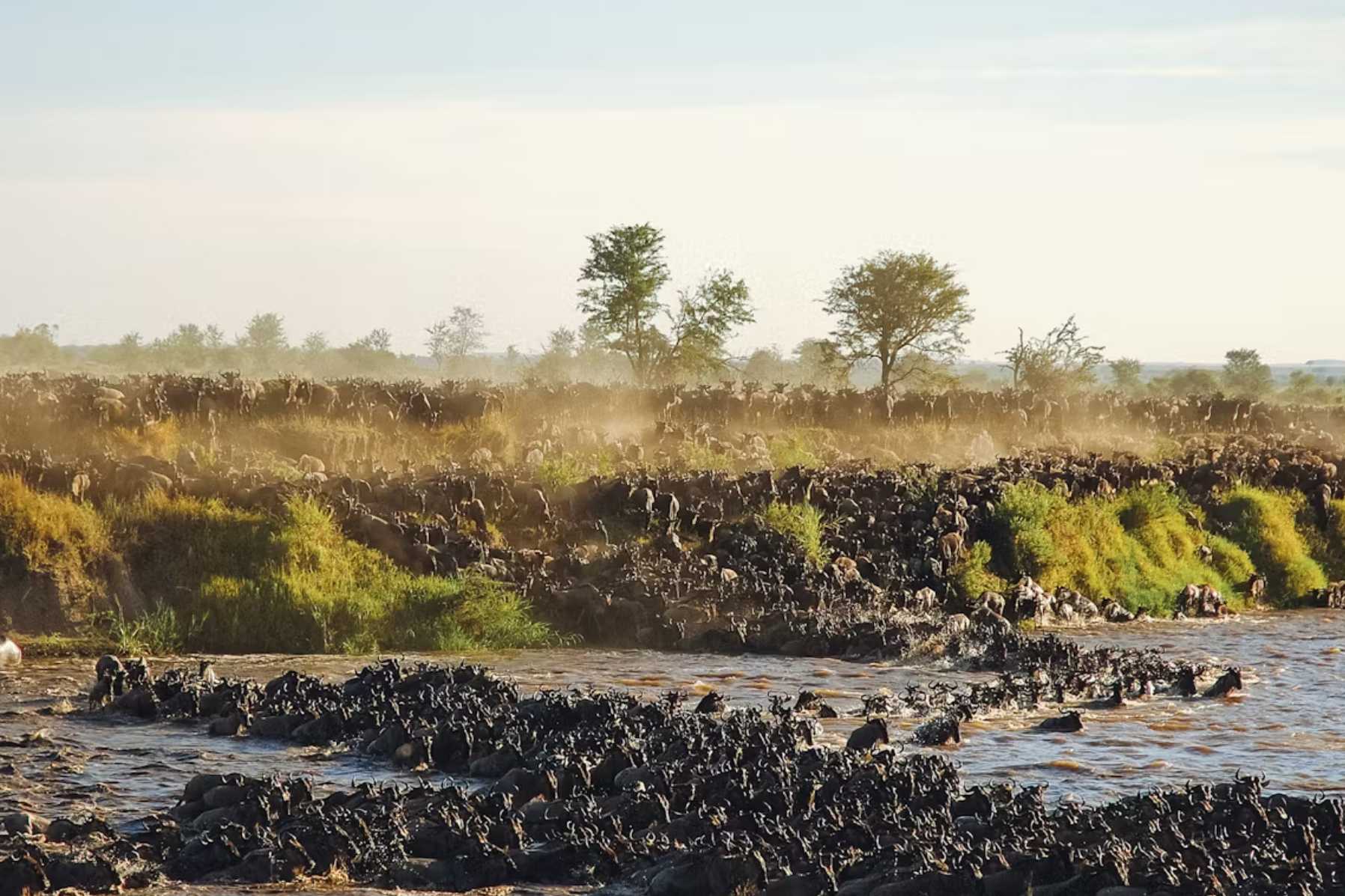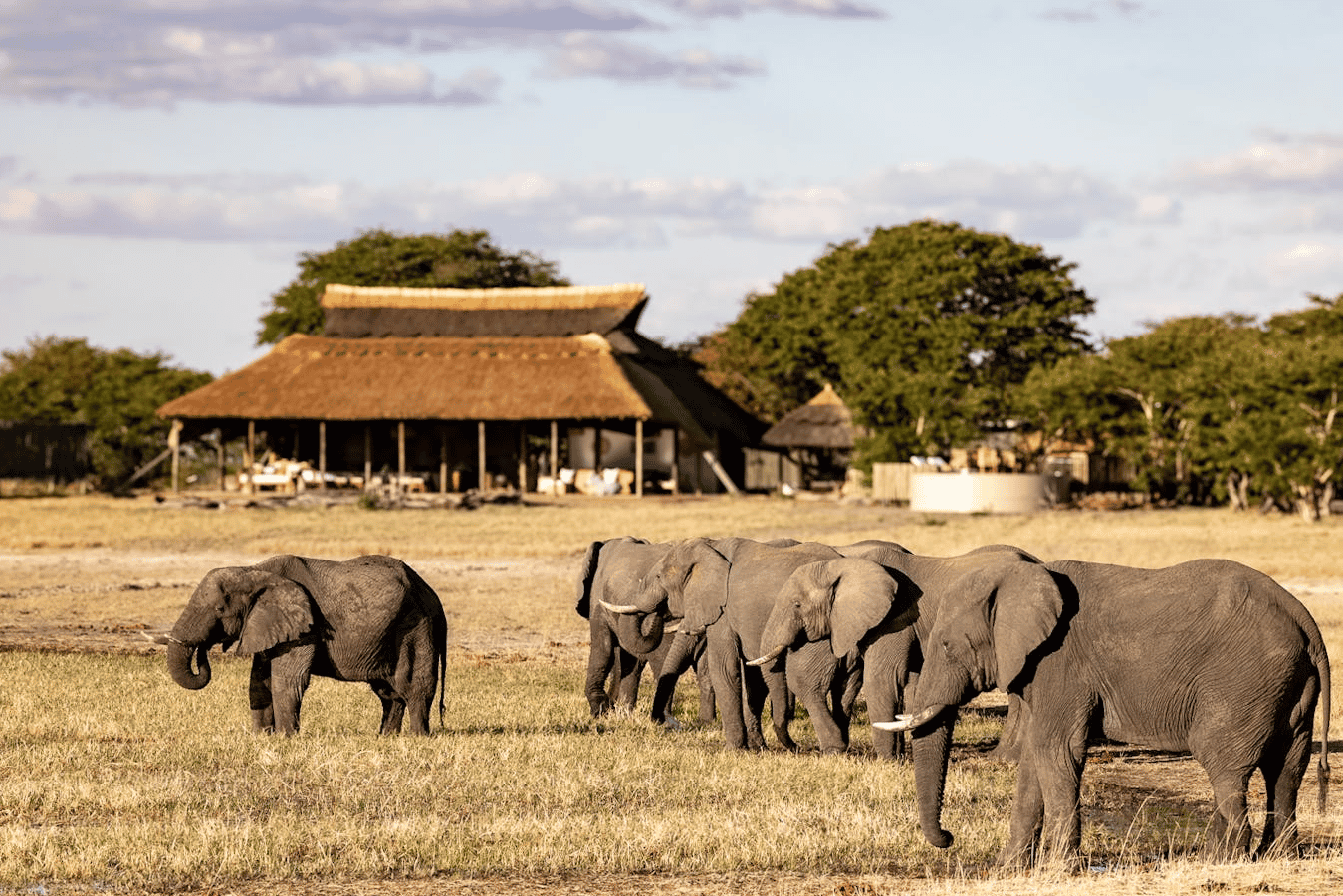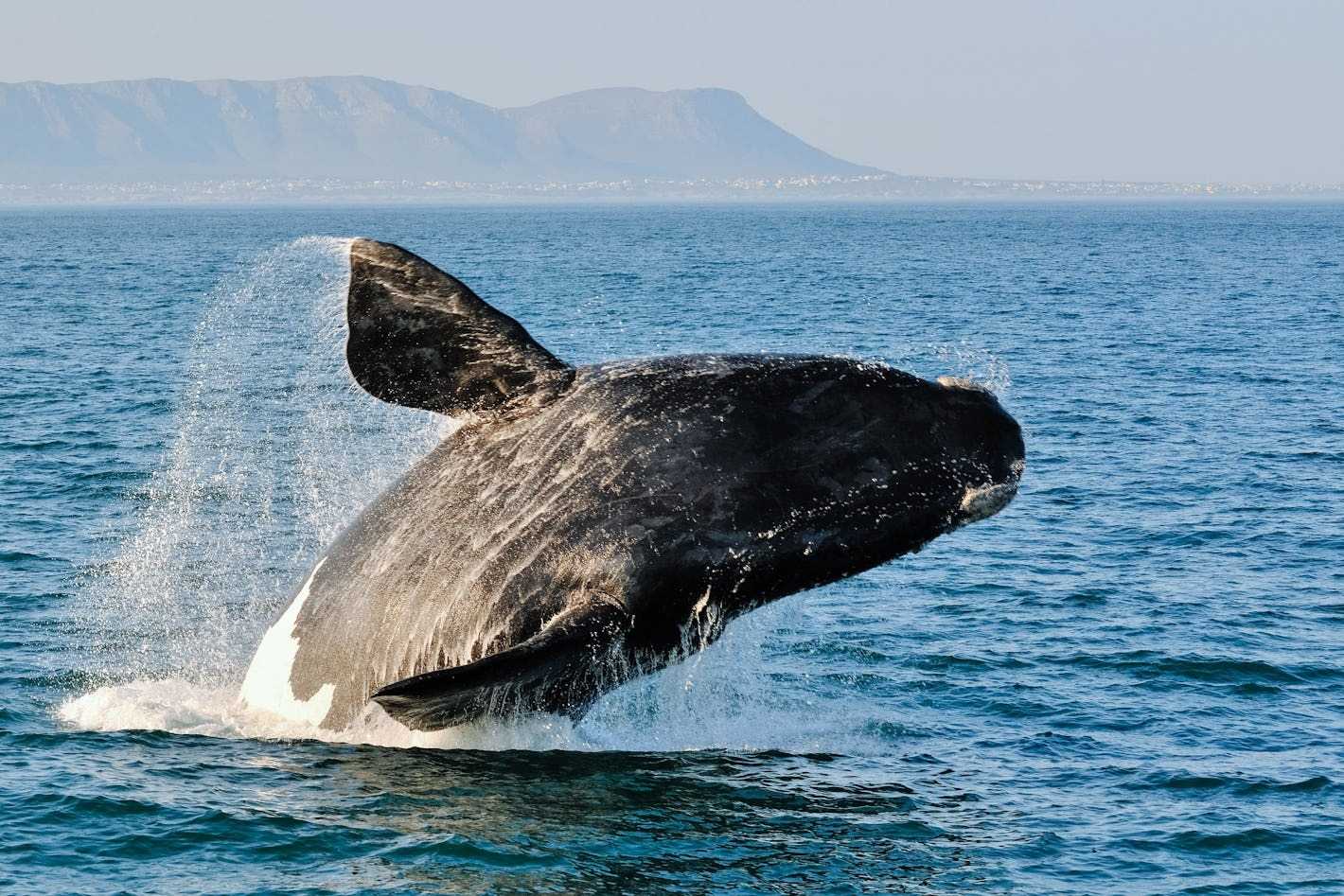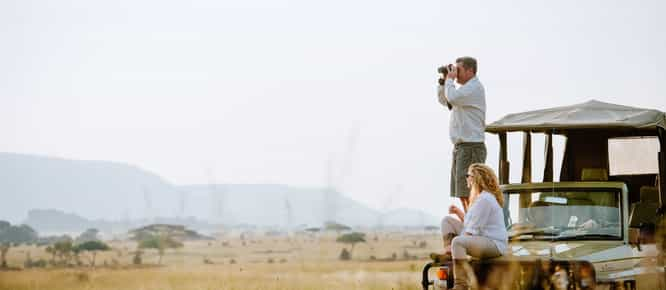Among the most iconic safari destinations in the world, the Serengeti is nothing short of mind-boggling when it comes to wildlife. Spanning 30,000 square kilometres of golden, grassy plains, the Serengeti-Mara Ecosystem is one of the world’s largest and most protected – and it just so happens to have one of the greatest wildlife concentrations on Earth, something that becomes clear as soon as you first venture out across the grasslands on a game drive. So buckle up and let’s dive into our Serengeti wildlife guide.
What to expect on a Serengeti safari
A vast landscape in northern Tanzania, the Serengeti spans miles of rolling grasslands, acacia woodlands and granite outcrops known as kopjes. In this environment, the foliage never gets too tall or thick to spot the Serengeti wildlife, making for some of the greatest animal viewing you’ll ever get on safari. The wildlife is diverse, plentiful and absolutely astonishing throughout the year and there are multiple highlights on the Serengeti National Park wildlife calendar. The Great Migration, we’re looking at you.
A Serengeti wildlife overview
Across the board, the Serengeti is famous for its Big Five sightings, which includes elephant, leopard, buffalo, lion and rhino (although rhino are admittedly rare and can only be seen in certain areas). In fact, the Serengeti is one of the best places to see lion in the wild as they swagger across the plains in great prides. The Serengeti is also home to over two million ungulates (hooved animals), including zebra, Thomson’s and Grant’s gazelle, topi, eland, hartebeest, impala, waterbuck, reedbuck, dik-dik, giraffe, buffalo and, of course, wildebeest. This means predators ike leopard, cheetah, hyena and wild dogs are present in impressive numbers as they follow their prey…
When starting to plan a Serengeti safari, it’s likely you’ll have the Great Migration in mind as the bulk of it takes place within the Serengeti. The second-largest land mammal migration on Earth, this never-ending journey sees over 1.5 million wildebeest, zebra and gazelle moving through the Serengeti (and the Masai Mara in Kenya) in search of water and fresh grasses to graze on. This megawatt event on the safari calendar includes heart-wrenching river crossings in the north at the Mara River, tender calvings in the southern plains, and enthralling scenes of thick columns of wildebeest winding their way across the landscape in the west and central areas. For more information on the different spectacles, read all about the Great Migration on our blog.
As you explore, it’s also worth keeping your eyes peeled for the Serengeti’s lesser-known wildlife. A very rare sight, striped hyenas can be seen on late-afternoon or night drives in the central Serengeti, particularly around the Seronera area. The Seronera Valley is also known to harbour the wild caracal cat. Quite unexpectedly, black and white colobus monkeys can be spotted in the treelines in northern Serengeti and along the Grumeti River. During the Great Migration, Beisa oryx can be seen throughout the central and southern Serengeti, where they graze alongside their fellow herbivores.
Birdlife in the Serengeti
The Serengeti may be famed for its larger-than-life animals, but make no mistake, it is also home to a prolific array of birdlife. Forming part of one of Africa’s Endemic Bird Areas, the Serengeti has over 500 known species of birdlife including a handful that are found nowhere else on Earth, namely the grey-breasted spurfowl, Fischer’s lovebird, the rufous-tailed weaver, Usambiro barbet and grey-crested helmet shrike. Other twitching ‘specials’ include the Schalow’s turaco, the southern ground hornbill, yellow-throated sandgrouse, green-backed woodpecker and Verreaux’s eagle. A variety of brightly-coloured migratory birds are present from November to April. Keep your binoculars at the ready as all manner of birdlife can be spotted soaring across the sky or zipping from branch to branch at any moment.
Best time to see wildlife in the Serengeti
In the Serengeti National Park, wildlife is never far away and It’s safe to say that there’s never a bad time to spot its most well-known creatures. However, there are still rainy periods (November to December and April to May), which fill up rivers and waterholes, and produce endless swathes of greenery to snack on, making the wildlife more widespread. This is, however, a fantastic time for wildlife photography as the air is clear, the colours are vivid, and many birds have donned their breeding plumage. The Serengeti is at its busiest between June and September, when the dry season has arrived, meaning wildlife is more tightly congregated, making for incredible scenes around the water holes. The iconic river crossings of the Great Migration also take place between July and September, which are a highlight for many safari-goers.
The regions of the Serengeti
The Serengeti is vast so it makes sense to split it into different sectors. Each of these in turn have their own ecological make-up and wildlife highlights.
Southern Serengeti Wildlife
Fulfilling the classic image of the Serengeti with short, lush grasses (after the rains, that is), the south is blessed with a host of diverse animals including herds of elephant and buffalo, prowling big cats and thousands upon thousands of plains game. Between December and March, it also plays host to the Great Migration and over a two to three week period in February, around 500,000 wildebeest, zebra, gazelle and impala calves are born. If you visit at this time, you’ll watch the tiny gnus take their first tottering steps and feed on the fresh shoots, while big cats seek out lunch with their own young in tow.
Central Serengeti Wildlife
The wildebeest of the Great Migration make their way to the central Serengeti between May and June, when they spill out and amongst the Moru Kopjes. Keep in mind that they’ll come back to this very spot in November and December as they return from Kenya to complete their circular journey. The Seronera River and other vital water sources attract much of the Serengeti wildlife, who come from miles around to drink, including the Big Five (it’s one of the few places where you can spot endangered black rhino), and a high density of cheetah and leopard, who like the hiding spots in the valley. Speaking of which, the Seronera River Valley creates a natural boundary between the grassy plains of the south and wooded hills of the north, making it one of the richest ecosystems in the park and welcoming wildlife from varying habitats. Apart from the animals, this is a very busy section of the park as it has a number of lodges and camps. However, we can help you time a visit just right to beat the crowds.
The Western Corridor Wildlife
The Serengeti’s western region marks the beginning of the Western Corridor, a natural highway that stretches all the way to Lake Victoria. A small but lush area, it is crossed by the Mbalageti and Grumeti Rivers, where the first round of Great Migration river crossings take place between May and June. A visit during this time will reward you with thrilling game viewing as wildebeest and zebra plunge across the Grumeti River, hoping to dodge the snapping jaws of Nile crocodile in an attempt to reach the other side. For an ultra-exclusive safari experience, the privately-owned Singita Grumeti Reserve sits on the border of this region and lies directly within the Migration route – between April and May, you’ll witness all the rutting action. It also offers excellent sightings of plains game, lion, cheetah, leopard and hyena throughout the year.
Northern Serengeti Wildlife
A landscape made up of slithering rivers, lush hills, granite outcrops and acacia woodlands punctuating the open savannah, the northern Serengeti has sensational wildlife viewing throughout the year. Large tracts of the sector are remote and unexplored and it is home to the largest concentration of elephants in the Serengeti and offers the best chance to see rhinos. It is also a great place for spotting the ‘Kilimanjaro’ giraffe. The largest of the giraffe species, they are set apart by their darker, smaller and jagged markings and roam in groups of up to 40. Situated in the north-eastern corner, the remote Lobo Valley is a particularly beautiful region known for its impressive prides of lion, and elephant and buffalo herds. To the east of the park, you can visit the Maasai-owned Loliondo Game Controlled Area, which is nearly a third of the Serengeti’s size and is an important wildlife corridor. This area also allows activities that can’t be done in most of the main National Park including night drives, off-roading and walking safaris. It is also possible to see hordes of wildebeest crossing the Mara River with far fewer tourists.
Eastern Serengeti Wildlife
The eastern Serengeti has incredibly diverse landscapes and provides ideal grazing for the migrating wildebeest between December and March. It acts as a popular pitstop for predators during calving season, as they stop off looking to prey on the weak and young. There are far fewer crowds in this section of the Serengeti too, and in fact, the sector was closed to humans for two decades in order to protect and grow the cheetah population. It is now known for its incredible advances in conservation and is home to the largest concentration of cheetah in the world. Seeing them prowling amongst the boulders at Gol Kopjes is quite a sight! The eastern region also boasts impressive numbers of leopard, hyena and lion.
How to see wildlife in the Serengeti
Of course, game drives are the most well-known and popular method of safari-ing, enabling you to get relatively close to the wildlife, follow predators on the hunt, and cover great distances. Helmed by your knowledgeable guide, game drives are bound to be a highlight on your trip. Certain areas and camps in the Serengeti offer walking safaris for close encounters of a different kind, stopping to examine prints and poo, and learning what the smallest details mean. For a bird’s eye view, take to the sky in a hot air balloon where wildlife scenes will play out below – it’s truly a one-of-a-kind way to safari.
The Serengeti isn’t known as one of the world’s greatest wildlife destinations for nothing. The sheer numbers and diversity are staggering, the scenery is beyond photogenic and the Great Migration lives up to every expectation.
